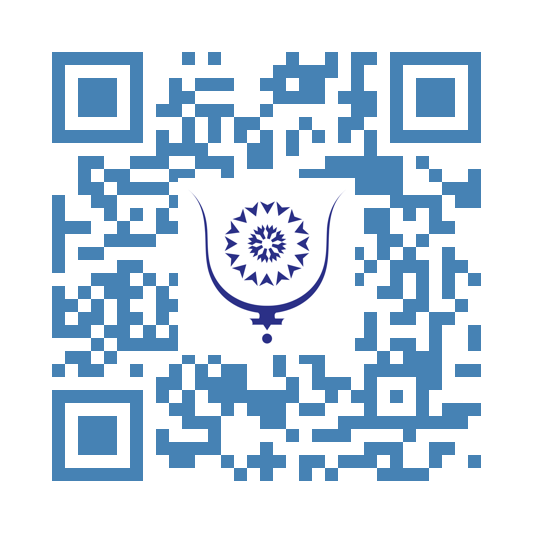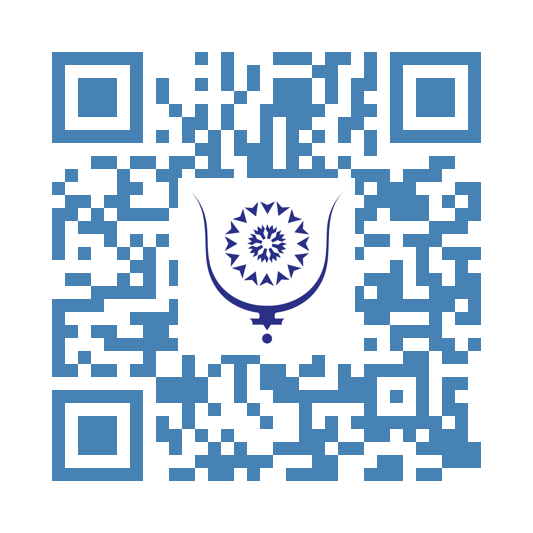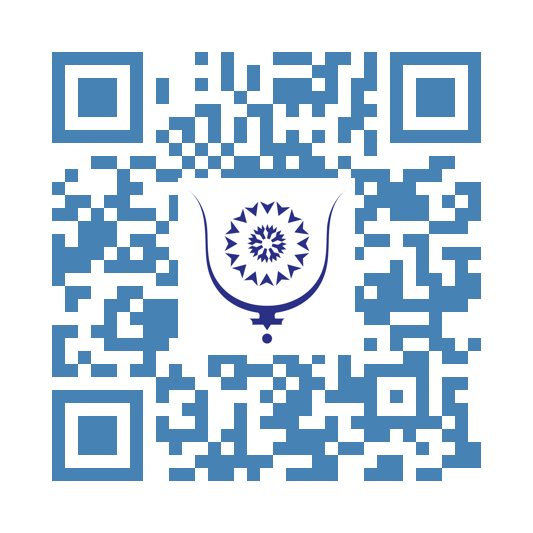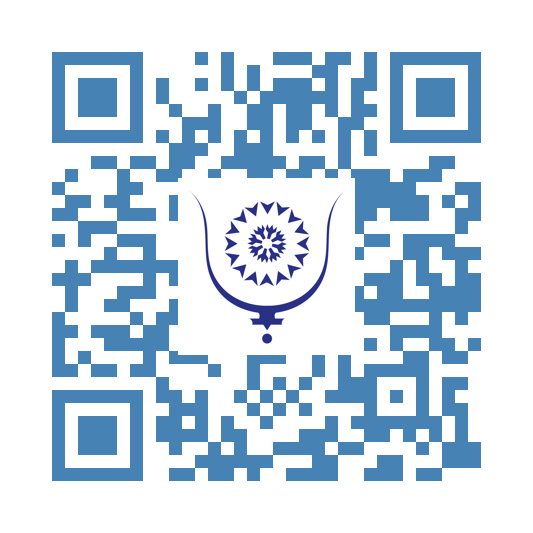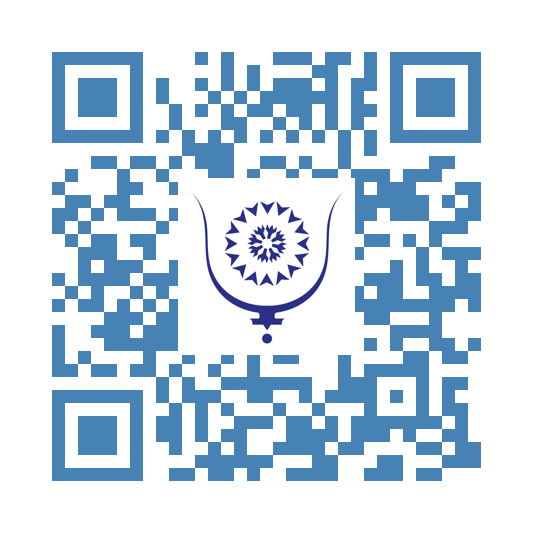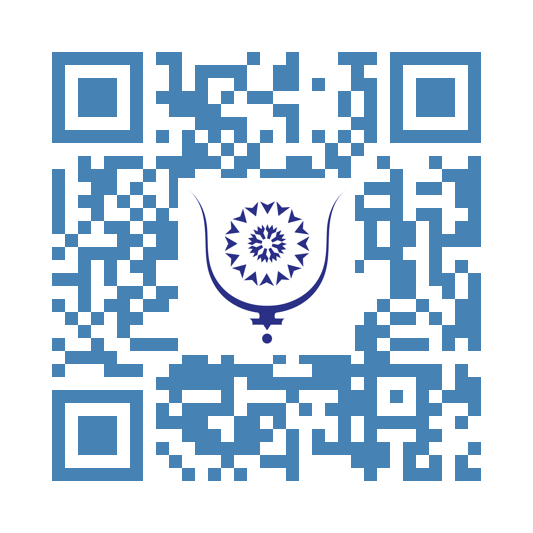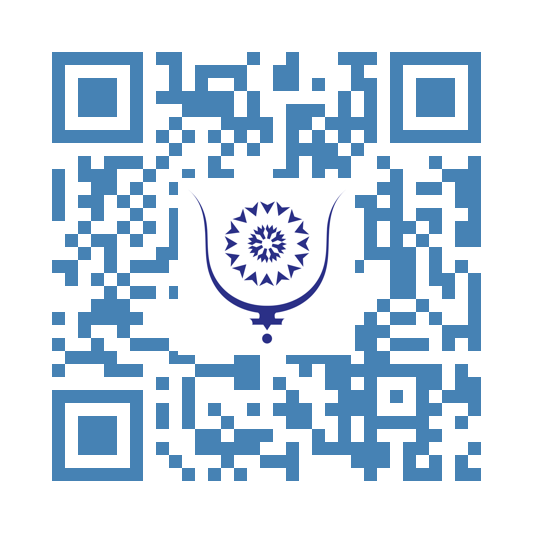Towards a New Era: The CAA Advocates for Fairness and Representativeness in World Athletics
99
At its latest congress held on July 14, 2025, in Abeokuta, Nigeria, the Confederation of African Athletics (CAA) adopted a resolution that could shake up the governance structure of global athletics. At a time when the debate around modernity and representativeness in international sports institutions is intensifying, the CAA proposes major reforms for the organization World Athletics (WA).
**At the heart of the reform: towards fairer governance**
In light of recent developments in global sport and the imperative to ensure transparency and efficiency, the CAA believes it is time to revise the statutes of World Athletics, the global governing body for athletics. The primary goal is to strengthen continental representativeness within the WA Council.
This reform necessarily hinges on key points in the resolution, notably fair representation by continent. The CAA suggests the establishment of a fixed quota of representatives for each continent within the Council. Such a measure would give each region an effective voice, limiting the overrepresentation of continents already firmly entrenched in international decision-making bodies. The CAA also proposes that members of the World Athletics Council be elected by the continental associations themselves, rather than by the global general assembly. According to the CAA, each continental association should directly elect its own representatives. The only exception in the proposed reform concerns the presidency: the position of World Athletics President would remain subject to the traditional election by the WA General Assembly, thereby preserving a form of institutional unity.
The resolution goes further, proposing that for all World Athletics commissions and working groups, the appointment of members should also fall under the authority of continental associations—according to quotas predetermined by WA regulations. This approach aims to ensure genuine diversity in the technical and strategic circles of global athletics.
This represents a new impetus for international sports democracy. The CAA’s initiative aligns with a worldwide movement demanding greater democracy, transparency, and balance in the governance of major sports federations. Several observers consider that such a reform, if supported by other continental associations, could serve as a model for other sports and contribute to a balanced, representative, and inclusive international sports world.
However, the proposal will face multiple challenges in its implementation. Despite its ambitions, the resolution must overcome several hurdles. Obviously, consensus must be reached with the other continental associations. It will also require negotiation with the World Athletics Council, which may fear a loss of influence for certain continents. Finally, the regulatory texts must be adopted within a timetable compatible with the desired institutional evolution.
Carried by the spirit of Abeokuta, the CAA’s proposal could well usher in a new era for athletics. It reaffirms the legitimacy of emerging continents and raises the fundamental question of fairness in international sport. Time will tell if this reform ambition will resonate globally and lead to a profound transformation in the governance of World Athletics.
Share:
Towards a New Era: The CAA Advocates for Fairness and Representativeness in World Athletics
copy:
https://bluwr.com/p/294911345
Moroccan Women’s Football: When Hope Hits the Glass Ceiling
146
For the second consecutive time, the Moroccan women's national football team has been defeated in the final of the African Women's Cup of Nations, despite both tournaments being hosted in Morocco. The second loss seems hard to accept, reigniting deep frustration among fans and sparking heated debates across the country. This defeat, this time against Nigeria following a previous loss to South Africa, highlights complex issues far beyond the playing field.
The start of the final was quite fantastic. The Moroccan national team, displaying a dazzling and effective style of play, found themselves leading 2-0 at halftime against a Nigerian side appearing lost on the pitch, as the Moroccans were skillful and disciplined. Unfortunately, they were caught up later.
The popular enthusiasm generated by the journey of the Atlas Lionesses contrasts sharply with the bitterness of the final defeat. For many observers, this failure is not simply bad luck. Several voices, expert and anonymous alike, offer various explanations that fuel the debate.
The coach’s tactical choices are being questioned. Many believe that the second half against Nigeria revealed a lack of inspiration and responsiveness, hence a lack of competence, notably through late substitutions that failed to dynamically revive the team as the game seemed to slip away from Morocco. Although not solely responsible for the outcome, these technical decisions sparked a wave of criticism regarding bench management and adaptability to the match’s developments.
Among various points raised is the average age of the players, arguably too high at 31. At this age, unless blessed with exceptional physical, technical, and mental qualities, it is difficult to sustain 90 minutes, especially after enduring 120 minutes and penalty shootouts just days earlier. There is also mention of sentimental considerations in the selection of certain players, picked to please others. Further criticism targets the deployment of some players who were not placed in their usual positions. In short, many viewpoints tend to converge on the technical staff’s responsibility.
The issue of physical conditioning is also raised. Several analysts and fans point to insufficient physical preparation, reflected in a drop in intensity and sharpness during key moments of the match. Facing opponents known for their athletic power and their ability to maintain high levels of demand throughout 90 minutes, this deficit proved fatal. In truth, physical conditioning is a long-term process that cannot be meaningfully developed at the national team level due to lack of time. It primarily occurs at clubs that have the players throughout the season. At the national team level, the fitness coach mostly focuses on maintenance.
However, the analysis does not stop at strictly sporting aspects. Throughout the tournament, the feeling of having been wronged by the refereeing was palpable. Some even spoke of "theft" or systemic injustice against Morocco. The controversial penalty, awarded then ultimately canceled for obscure reasons, only confirmed this sentiment. Was a certain number of Nigerian titles guaranteed at all costs?
Social media, acting as a true echo chamber for popular emotions, immediately ignited after the final. Criticism multiplied against the federation and its president. Some internet users accused him of failing to assert Morocco’s authority in its own stadium, while others pointed to management detached from supporters’ expectations, who had been buoyed by recent progress in national women’s football.
A polarization of the debate has since emerged. On one side, a segment of the public, legitimately disappointed, demands accountability and calls for radical changes in team management. They remind that it was the same coach who led the team to victories before losing the Olympic qualification to Zambia on home soil. On the other side, defenders of the current leadership emphasize the progress made, insist on the need for stability, and caution against hasty judgments, citing the impressive record of the Spanish coach. They remind critics that Nigeria holds 10 African titles and has reached a World Cup quarter-final, while Morocco had little clout before.
While the Royal Moroccan Football Federation has succeeded in putting women's football on the continental map—something that barely existed not long ago—the path from dream to achievement remains fraught with obstacles.
It now appears urgent to draw conclusions, both technically and structurally, especially since the tournament will soon be held again in Morocco and, under the new format, will serve as a qualifier for the 2027 World Cup in Brazil. Will the same staff be kept despite everything, with a squad whose average age does not allow for enduring the seven matches of the African Cup and a deep run in the World Cup?
Although premature, it might be wise to quickly assess the strategy of a women’s football program fully funded by the federation to the tune of 1.2 million per team—a very substantial amount compared to other teams in other sports. Are clubs doing their job properly to avoid wasting money for a near-zero return at the national team level?
Priority should be given to improving scouting and physical preparation, expanding the pool of professional players, and raising the standards in Botola (the Moroccan league). At the same time, efforts in communication and dialogue with supporters seem essential to restore trust, ease tensions, and encourage collective mobilization around upcoming challenges.
The reading of His Majesty the King’s message, may God assist him, to the team must be twofold. Yes, the team and staff deserve congratulations for the journey, but the Royal message is also a warning regarding future expectations. And the future includes other football competitions the country is preparing to host.
Moroccan women’s football is at a turning point. Between the merit of past achievements and the need to reach a new level, the challenge remains immense. But sports history is made as much of setbacks as resilience. The key may lie in the ability of those behind this project to transform current frustration into a driving force for the future, so that the hope raised by these bittersweet finals finally turns into accomplished victory.
Share:
Moroccan Women’s Football: When Hope Hits the Glass Ceiling
copy:
https://bluwr.com/p/293839700
When Christopher Nolan Illuminates Dakhla, Dakhla Enhances His Film...
152
Christopher Nolan has just finished shooting part of his upcoming film, *The Odyssey*, in Dakhla, a gem of southern Morocco. It is a cinematic adaptation of the epic of Ulysses. Among the chosen shooting locations is the spectacular White Dune, located about thirty kilometers from Dakhla — an exceptional natural setting blending white sand and turquoise lagoon — which greatly contributed to the film’s visual richness.
This Hollywood blockbuster features a prestigious cast: Matt Damon plays Ulysses, alongside Zendaya, Charlize Theron, Tom Holland, Robert Pattinson, Anne Hathaway, and Lupita Nyong’o. The worldwide release of the film is scheduled for July 15, 2026. Before setting up cameras in Dakhla, Nolan’s team had filmed sequences in Ouarzazate, notably at the Ksar Aït Ben Haddou, as well as in Italy. Originally, Nolan considered locations such as Bermuda or Australia for some maritime scenes, but ultimately chose southern Morocco, recognized for the diversity and quality of its natural landscapes.
The shoot in Dakhla is widely seen as a great opportunity for the city and for Morocco, boosting their visibility on the international film scene while promoting the local film industry.
But who is Christopher Nolan in the world of cinema? In 2024, he won two major Oscars: Best Director and Best Picture for *Oppenheimer* (2023). He also received an honorary César for his entire career, the BAFTA for Best Director, as well as several other prestigious awards such as the Golden Globes and the Directors Guild of America Awards, all for *Oppenheimer*. This brief overview proves that Nolan is no ordinary figure in the film industry — he is one of the greatest filmmakers in the world.
However, this production sparked some controversy and unfounded criticism lacking rigor. The media outlet Middle East Eye dedicated an article condemning the shooting in Dakhla, adopting a selective and victimizing tone, relying on a rhetoric of “decolonization” and supposed “indigenous voices.” This critique, riddled with historical inaccuracies and an obvious bias, reveals either a deep ignorance of the history and physical and human geography of these regions or a deliberate will to distort reality for some ulterior motive...
The filming took place in a peaceful and stable city, equipped with modern infrastructure, where Moroccan sovereignty is indisputable. It is probably this stability that troubles some, especially because it highlights the Kingdom’s successes in this region of its territory, contrasting sharply with the difficult situation caused by the Polisario Front, which, under its tutelage, has brought nothing but despair and a lack of dignity to populations held hostage in the Tindouf camps for nearly 50 years.
While Middle East Eye accuses Morocco of “cultural normalization,” the article omits mentioning that Algeria exerts a true occupation over the Sahrawis held captive in the camps of shame, where they are a minority compared to the Sahrawis in Morocco, and have neither freedom of movement, nationality, nor an independent press. They don’t even benefit from refugee status, with the United Nations prevented by the host country from registering them. The real question remains: who is the true colonizer in this context?
The Sahrawis, who are the majority and live in Moroccan Sahara, enjoy a significantly higher standard of living than the populations in the Tindouf camps — or even compared to those in the host country overall. They participate in democratic processes, govern their communes, towns, and regions, engage in the political life of the Kingdom, hold positions of responsibility at all levels of government, create businesses, run associations, travel freely, and produce cultural works enriching their country. Their children attend quality schools and universities. They receive care in top-tier hospitals and do not need a media outlet to speak for them.
In reality, this article has nothing to do with serious journalism but rather reflects nostalgia for reversed colonialism and an outdated neo-Orientalist vision. It is an ideological staging orchestrated by a group of European activists using the Sahrawis as instruments of propaganda that has been seen before, and that is, frankly, absurd. The goal here is neither peace nor real autonomy, but the perpetuation of artificial resentment in service of their chimera of an independent Sahrawi state — a state that will never exist.
Meanwhile, the *The Odyssey* shooting team, satisfied with the quality of reception, assistance, and support from the Moroccan authorities and the work accomplished, has indeed returned to the USA aboard a Royal Air Maroc plane chartered for the occasion.
Let us hope Christopher Nolan will not take long before returning with another project and that the beauty of the images in his film will encourage other major filmmakers worldwide to come to Dakhla to elevate their upcoming works.
Share:
When Christopher Nolan Illuminates Dakhla, Dakhla Enhances His Film...
copy:
https://bluwr.com/p/293826670
Jacob Zuma’s Visit to Morocco Sparks Diplomatic Shake-up Over Moroccan Sahara Conflict
472
The visit of Jacob Zuma to the Kingdom of Morocco triggered a desperate diplomatic response from the Polisario Front in South Africa, marking a significant political upheaval around the Moroccan Sahara conflict. Since then, the Polisario and its patron have shown nervousness reflecting a loss of influence even in African regions previously aligned with separatist positions.
But who is this man whose words have caused such turmoil and dismay?
Jacob Zuma is a South African statesman. He is a former anti-apartheid fighter imprisoned for ten years on the notorious Robben Island. Supported by the African National Congress (ANC), he rose through political ranks to become Vice-President of South Africa from 1999 to 2005, then President from 2009 to 2018, succeeding Thabo Mbeki. Zuma also served as ANC president from 2007 to 2017. Despite legal troubles and leaving the presidency, he maintains serious political weight, notably through the uMkhonto we Sizwe (MK) party he now leads, which became the third-largest political force in South Africa after the May 2024 elections.
Therefore, Zuma is not just any South African speaking on such an important issue for the continent and world.
On July 15, 2025, in Rabat, on behalf of himself and the MK party, Zuma took an unambiguous stance supporting Morocco, breaking with Pretoria's relatively recent official line. He called Morocco's autonomy proposal a "pragmatic and balanced solution," guaranteeing Moroccan sovereignty over its southern provinces while offering substantial local governance to the populations.
This position, officially supported by MK, represents a dramatic turnaround in South Africa and the region. Until now, South Africa backed the puppet Sahrawi Arab Democratic Republic (SADR) and the Polisario Front, framed as pan-African solidarity against colonization, consistent with Algeria's ideological stance. The argument for separatism artificially tied to Morocco's southern provinces ignores that Spanish colonization in this integral part of the Cherifian Empire lasted about 91 years (1884–1975), when Spain declared a protectorate over the Western Sahara region and governed it until its 1975 withdrawal under the Madrid Agreement with Morocco.
Since Nelson Mandela's death, South Africa had quickly sided with Algeria's vision of an independent state between Mauritania and Morocco, overlooking Morocco's historic support for South Africa's anti-apartheid struggle.
In reaction to Zuma's recent statements in Rabat, where he explicitly supported Morocco's autonomy plan for Western Sahara, the Polisario swiftly sent its Foreign Minister Mohamed Yeslem Beissat to Pretoria. This move comes amid tense diplomacy and a major shift in South African policy on the formerly Spanish Sahara. Until then, all political forces in the country were aligned with the government’s position.
Panicked, the Polisario dispatched a delegation led by Beissat, who knows the field well after years representing the entity, officially invited by the ANC under Cyril Ramaphosa to attend a "liberation movements summit" in Pretoria from July 25 to 28. This summit, themed "Defending liberation gains, promoting integrated socio-economic development, and strengthening solidarity for a better Africa," also gathers other supporters of similar causes like Palestinian Jebril Rajoub, allied with Algeria and Polisario. The event, organized by the South African embassy in Algiers, aims solely to back separatist positions and offer support.
The ANC quickly condemned Zuma's support for Western Sahara's Moroccan sovereignty on principle, accusing him of betrayal and dissidence after his split from the party. However, not all ANC factions still adhere strictly to Ramaphosa's official line. Many ANC leaders now recognize that siding with Algeria’s unproductive position has been a significant loss for their country. The influence of Zuma, a powerful political figure, has forced the Polisario and its patron to coordinate their response amid the new diplomatic dynamics intensified by his backing of Morocco.
This diplomatic earthquake happens as several African states have progressively withdrawn recognition of the SADR in favor of the Moroccan plan, potentially further isolating the Polisario and Algeria continentally. During his visit, Zuma reminded the historical role Morocco played in the anti-apartheid struggle, seemingly lamenting his country's unexpected post-Mandela shift. He advocated for a strategic alliance based on respecting African states' territorial integrity, moving away from separatist support—a pragmatic stance shared by many South African officials. A rapprochement between Morocco and South Africa, the only African countries with truly industrial and diversified economies, could benefit both powers and the continent as a whole. The era of imported ideologies serving as democratic facades for military dictatorships is over and no longer effective.
Thus, the Polisario minister’s visit to Pretoria appears a desperate attempt to limit the impact of a shift that could deeply transform political balances in Southern Africa and accelerate Morocco’s strengthening continental and international position
Share:
Jacob Zuma’s Visit to Morocco Sparks Diplomatic Shake-up Over Moroccan Sahara Conflict
copy:
https://bluwr.com/p/290180994
Between Ideology and Pragmatism: The Spanish Radical Left's Controversial Stance on Moroccan Sahara...
799
I confess here that it was the writings of Si Lahcen Hadad that pushed me to take a closer interest in this Spanish left, which positions itself in opposition to the Sánchez government, which is itself left-wing. Not reading Spanish, I am therefore somewhat less inclined to pay attention to the repeated ignominies of this left, sick from not being able to access power, sick from its aborted history, sick from what it actually is. So, to exist, it invented a cause. Too bad if it understands nothing about it, too bad if it harms Spain’s interests, too bad if it distorts history, ignores geography and demography, too bad if its reasoning, if it is reasoning at all, is far from logical, too bad if it lies outrageously. The important thing is to exist and to appear to the Spanish public as the defender of the causes of the most deprived... No matter if those people harmed the Spanish people; no matter if they have Spanish blood on their hands. Manifest bad faith.
In Spain, therefore, a significant part of the radical left, mainly represented by formations such as Unidas Podemos, an alliance between Podemos, Izquierda Unida, and other minority groups, maintains a posture—let’s say critical, if not belligerent—towards the Kingdom of Morocco.
This contradictory position is fed by a historical prism marked by colonial memory, “anti-imperialist” struggles, but also by the question of the Sahara, called the "Spanish Sahara" until 1975, as it was a former territory under Spanish domination until the Green March in 1975.
This radical left considers Morocco a belligerent and threatening actor. The debate is not limited to territorial disputes: it fits into an ideological vision where the Moroccan state is often presented as an authoritarian and repressive regime, described as a neocolonial power. This is what underpins the repeated support for the artificial Sahrawi cause, presented as an anti-colonial and anti-imperialist fight. Support for the Polisario Front thus seems embedded in the DNA of these “gauchos,” regardless of developments.
Historically, several components of the Spanish left have expressed clear support for the Polisario Front, founded in 1973, which was nevertheless supported by Gaddafi, then hosted, supplied, and armed by the Algerian regime with the aim of harming Morocco’s interests. This support manifests itself in various forms:
- Filing parliamentary motions in defense of the right to self-determination for this small part of the Sahara alone;
- Participation in international pro-Polisario forums and associative networks that blindly support it, regardless of reports on the embezzlement of aid, rapes, and flagrant human rights abuses in Tindouf;
- Pressure on the Spanish government and European institutions to recognize the political status of the Sahara, neglecting to mention that it was formerly occupied by their country, as a territory to be decolonized, in opposition to Morocco’s historical sovereignty. Even the autonomy proposal, well known in Spain, does not seem to satisfy them.
However, it should be noted that this support comes in a context of strong internal contestation in Spain. Since the socialist government of Pedro Sánchez expressed its support in 2022 for the Moroccan autonomy plan, this radical position has somewhat fractured. This change reflects a pragmatic adaptation by some to the geopolitical, economic, and migratory realities that closely link the two countries.
Faced with challenges related to managing migratory flows through the occupied enclaves of Ceuta and Melilla, as well as security and economic cooperation with the Kingdom of Morocco, the Spanish government has refocused its diplomacy. This has led to a gradual distancing of the left—but not the radical left—from the Polisario, thus marginalizing its influence on official policy.
In this context, some voices within the radical left still try to persuade European institutions to keep pressure on Morocco, demanding that the so-called Western Sahara remain central to priorities to resolve an “unresolved colonial conflict.” Parliamentary groups and “pro-Sahrawi” NGOs continue to denounce bilateral agreements between Madrid and Rabat, refusing that the issue be sidelined in favor of a more “pragmatic” diplomacy.
Spanish and European institutions, the theater of these ideological tensions, thus see the radical left forces seeking to have the question of the so-called Western Sahara recognized as a “state matter.” They denounce Moroccan control over this dossier and strongly contest the diplomatic normalization policies carried out by Madrid.
This line reflects a deep political fracture, where post-colonial idealism and outdated self-determination claims clash head-on with political realism marked by the search for regional strategic balances.
Support for the so-called Sahrawi cause is not without controversy. Activists, commentators, and victims have recalled that the Polisario Front was, in the past, involved in violent operations in Spanish territorial waters, causing the death of Spanish fishermen.
These painful episodes resonate in Spanish public opinion and fuel a virulent critique of radical positions that support a movement with a past combining political struggle and violent actions. This memory weighs heavily in contemporary debate and is exploited by political forces opposed to these radical left positions, notably the Spanish right.
The question of the Sahara, a territory that was Spanish for a time, remains an important point in relations between Spain and Morocco. However, current political, economic, and security realities push for pragmatic Spanish diplomacy, favorable to strengthened cooperation with Rabat, thus marginalizing the radical stance on both governmental and international stages.
The historical legacy is here perfectly exploited for contemporary necessities in managing Ibero-Moroccan relations.
Today, after consulting numerous articles and writings recounting the positions of this left of another era, I understand a little better Si Lahcen Hadad's fight on the subject, and even more so his sharp responses to the remarks of a certain Ignacio Cembrero, whom I now see only as a bland neurotic. Thank you, Si Lahcen.
One question remains: why is the Moroccan left not more inclined to take a stand and strongly denounce the alienated stance of their Spanish counterparts?
Share:
Between Ideology and Pragmatism: The Spanish Radical Left's Controversial Stance on Moroccan Sahara...
copy:
https://bluwr.com/p/281705762
Theurgy
927
Theurgy (Greek: θεουργία, theourgía, “divine work”) is the sacred art of invoking and communing with the divine through ritual acts, moral purification, and contemplative discipline. Emerging from the spiritual philosophy of late Neoplatonism, especially as formulated by Iamblichus (c. 250–325 CE), theurgy is distinguished from other forms of magic by its noble ideal - the soul’s ascension and union (ἕνωσις, henosis) with the divine source.
Unlike goetia, which seeks to manipulate material outcomes, theurgy is fundamentally initiatory and redemptive. It engages the practitioner in a disciplined ascent through the metaphysical hierarchy of existence, beginning in the sensory world and leading toward the transcendent unity of the One. This ascent is made possible through divine grace and ritual participation in the cosmic order. The theurgist operates within a universe conceived as a great chain of being (σειρά, seira), extending from the indescribable source through the divine intellect (νοῦς, nous), the soul (ψυχή, psyche), and the celestial intelligences, down to the elements of the material world. Through sacred rites, one may ascend these levels of reality by re-establishing communion between the soul and its divine archetype.
At the heart of theurgical practice lies the invocation of spiritual intelligences—gods, archangels, planetary powers, and cosmic intermediaries—through symbolic actions, sacred statements, and hieratical rituals. These acts are not merely symbolic or theatrical, but sacramental: they are performed to align human activity with the divine will and to reflect the eternal order of the cosmos within the temporal world. Iamblichus stressed that such union with the gods could not be attained through philosophical reasoning alone. Rather, one must engage in ritual action using sacred symbols, divine names, and purificatory rites to render the soul receptive to the divine presence.
The practice of theurgy was closely tied to philosophical ethics and interior purification. The theurgist was expected to live a disciplined life, cultivating virtue, moderation, and piety. This internal preparation was as crucial as the external rite, for the soul must be made capable of bearing divine illumination. Through repeated engagement with divine acts, the practitioner refines the spiritual vehicle and becomes gradually elevated to recognize the higher realities without distortion.
Historically, theurgy developed as a synthesis of Platonic metaphysics, Chaldean oracles, Egyptian temple rituals, and mystery initiations. While rooted in the classical world, its influence extended into the Middle Ages and Renaissance. Figures such as Marsilio Ficino and Giordano Bruno drew heavily on theurgical principles in their Hermetic and Neoplatonic revivals. In modern esotericism, especially within orders such as the Hermetic Order of the Golden Dawn, theurgical ideas persist under the structure of ritual magic, planetary invocations, and Qabalistic ascent.
The ultimate goal of the theurgist is apotheosis—not in the sense of personal glorification, but in the restoration of the soul to its divine pattern, beyond all individuation. As Iamblichus declares in his treatise On the Mysteries:
“Theurgy unites us to the gods, not through thought, but through divine acts.”
In this sense, theurgy is not merely a practice, but a sacred path—a divine remembrance enacted through the body, soul, and spirit, leading the practitioner not toward mastery of the world, but toward reintegration with the divine fullness (πλήρωμα, pleroma) from which all emanates.
Share:
Theurgy
copy:
https://bluwr.com/p/278216127
Morocco, History, and Geography: The Foundations of Political Reality and Territorial Integrity...
1082
Politics cannot be separated from history or geography. It consists of a set of actions and decisions aimed at organizing a society internally, as well as in its relations with the rest of the world. It is always situated within a context shaped by the two fundamental dimensions of history and geography, which are by no means mere backdrops but rather provide the framework within which political projects, conflicts, and developments unfold. Politics may be influenced by an ideology—born of a philosophy—or simply shaped by a given context, but such influence rarely lasts.
History plays a fundamental role in understanding political phenomena. A country’s institutions, laws, and values are rooted in its collective memory, an inheritance made up of major events, breaks, or continuities with the past. Borders, for example, are often drawn following wars or treaties, the outcome of ancient or recent conflicts. They remain visible marks of past rivalries, defeats, victories, and compromises. Relations—whether of solidarity or rivalry—between nations, regions, or communities are explained in light of shared or divergent histories.
The present Kingdom of Morocco cannot be understood without reference to its millennial origins, to the centuries-old Sharifian Empire, nor to the successive dynasties that shaped its relationship to religion, allegiance, and the centralization of power throughout different eras.
Similarly, geography significantly influences the choices and constraints of public policies. The distribution of natural resources conditions economic development, territorial organization, and power relations. Relief, climate, and access to maritime routes determine possibilities for urbanization, agriculture, communication, and defense. Border situations impose specific diplomatic and security policies, while landlocked or insular areas require tailored strategies. Some authors even describe Morocco as an “island country” due to its geographical configuration.
It is therefore inconceivable to conceive of effective or legitimate politics without taking history and geography into account. Every choice, reform, or political ambition must be based on a deep understanding of the territory and collective memory; ignoring one or the other exposes one to illusion, misunderstanding, or even failure.
Regarding the Sahara, referred to as the “Western Sahara,” the geography of this region is undeniably contiguous to Morocco, physically, demographically, and historically: the Saharan populations have largely contributed to the country’s evolution. Its history was written through the successive allegiances of its tribes to the sultans of Morocco, and the Sharifian kingdom thus constitutes a nation-state established long before the contemporary era.
Weakened by having missed the crucial turn of the industrial revolution, the Sharifian Empire was dissected from south to north, but also from the east. The so-called Western Sahara was annexed by Spain, which exercised colonial control there from 1884 to 1975. This situation facilitated France’s domination over territories grouped into French West Africa, part of which later became Mauritania. France also appropriated the eastern part of the Sharifian Empire, annexed de facto to its departments conquered from the Ottoman Empire and called French Algeria. The remainder was placed under French protectorate, while northern Morocco came under Spanish rule.
Independence, achieved in 1956, and the gradual decolonization of Sidi Ifni and Tarfaya concerned other regions only later.
On November 28, 1960, France authorized the proclamation of Mauritania’s independence—a region then claimed by Morocco, as were territories under Spanish control that Morocco considered its own. At that time, there was a Moroccan ministry called the “Ministry of Mauritanian and Saharan Affairs,” headed by Mohammed Fal Ould Oumeir, a representative of those territories.
From 1963 onwards, the kingdom raised the issue of the Spanish Sahara before the Decolonization Commission. The situation became complicated when newly created Mauritania also claimed the territory, notably to pressure Morocco, which did not recognize Mauritanian independence until 1969—nine years after its proclamation. Morocco continued to claim the Spanish Sahara peacefully, preventing the Liberation Army from pursuing military actions in the region.
In 1973, the creation of the Polisario Front (Popular Front for the Liberation of Saguia el-Hamra and Rio de Oro) marked a new stage. This movement initially aimed to unite the Saharan territory with the “motherland.” But in a context of regional rivalries and ideological tensions, the Saharan question was instrumentalized by various actors.
Muammar Gaddafi’s Libya played a decisive role in the rise of the separatist Polisario, supporting and arming the movement in a "revolutionary" and pan-Arabist logic, while seeking to destabilize the Moroccan monarchy. Later, Gaddafi himself admitted having made a “strategic mistake” in backing this group, which remains a destabilizing factor in the region today.
In 1975, a peaceful turning point occurred: bolstered by the International Court of Justice’s opinion recognizing ties of allegiance between Saharan tribes and Moroccan sultans, the late King Hassan II launched the Green March to general surprise. This mobilization pushed Spain to withdraw from Laâyoune in favor of Morocco, which immediately reclaimed the territory. Mauritania, although having occupied adjacent zones, ultimately withdrew, leaving Morocco alone against the Polisario Front, actively supported by Algeria, which hosted, armed, financed, and elevated the movement into a “republic.”
Houari Boumédiène’s Algeria exploited the situation to weaken its Moroccan neighbor, even calling the Saharan issue a “thorn in Morocco’s side,” a way of exacting revenge for the crushing defeat in 1963.
This dispute has often overshadowed the deep history of ties between Morocco and these territories under Sharifian authority well before the colonial era. For Morocco, territorial integrity rests firmly on the constants of history and geography—major arguments. The rest is merely a temporary construction without foundation, destined to fade into oblivion in the near future.
Moroccans know this very well… Perhaps not everyone else…
Share:
Morocco, History, and Geography: The Foundations of Political Reality and Territorial Integrity...
copy:
https://bluwr.com/p/275453220

